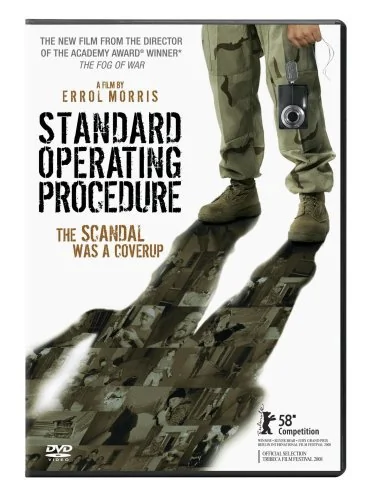🎯 Quick Overview
Trailer
- Director: Errol Morris
- Genre: Documentary, Crime, War
- Release year: 2008
- Runtime (length): 1h 56min
- IMDb rating: 7.4/10 (4.2K votes)
- Rotten Tomatoes: 81%
😅 Plot Summary – Badly Explained
A bunch of soldiers take really inappropriate selfies at work, and then everyone wonders why nobody higher up went to jail.
🍿 Standard Operating Procedure: Detailed Plot Synopsis
Unpacking the Abu Ghraib Scandal
The film delves into the infamous events at Abu Ghraib prison in Iraq, where photos emerged in 2004 depicting the abuse and torture of detainees by U.S. military personnel. It sets out to investigate the context surrounding these shocking images, which had a profound impact on the Iraq War and America’s global image. Unlike a traditional narrative, the documentary focuses on interviewing the low-ranking soldiers directly involved in the incidents and the taking of the photographs. It seeks to understand their perspectives, motivations, and what was happening both within and outside the frame of the notorious pictures.
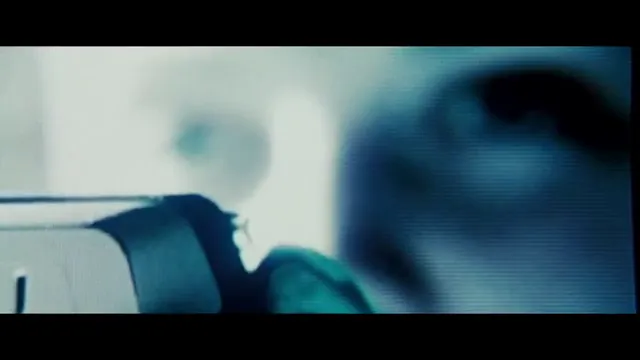
The Soldiers’ Perspectives and Experiences
Through candid interviews, soldiers like Lynndie England, Sabrina Harman, and Javal Davis recount their time at Abu Ghraib. They describe the harsh conditions, the pressure they were under, and their roles in the events that unfolded. The film presents their individual accounts, often highlighting the contradictions and complexities of their actions. It explores their claims of following orders or standard procedures, contrasting them with the shocking nature of the photographed abuses.
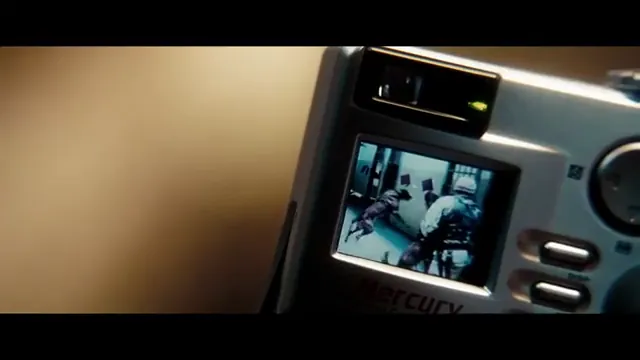
Behind the Photos: Events Captured and Unseen
The documentary dissects several of the most infamous photographs, showing the images and discussing the specific incidents they depict. Interviewees explain how certain scenes were staged or came about. The film also touches upon the larger environment of the prison and interrogation methods used, including those by other government agencies, suggesting that the photographed events were part of a broader, more systemic issue, even if only certain acts were later deemed ‘criminal’.
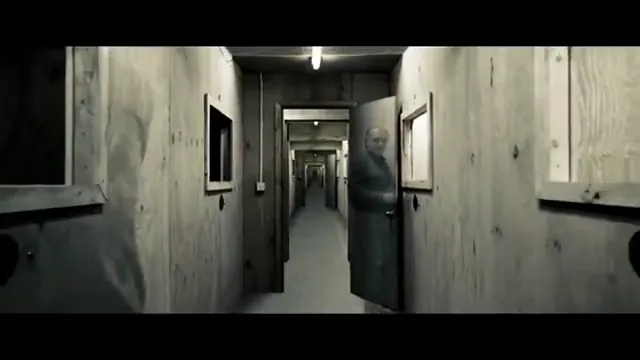
⚠️ Spoilers and Ending Explained
🎬 Cast & Characters
- Self (Lynndie England): Lynndie England is a young soldier prominently featured and interviewed about her role in the infamous Abu Ghraib photos.
- Self (Sabrina Harman): Sabrina Harman is one of the soldiers who took many of the key Abu Ghraib photos and is interviewed about her experiences.
- Self (Javal Davis): Javal Davis is a soldier interviewed in the film about his direct involvement in the events depicted in the Abu Ghraib photographs.
- Self (Megan Ambuhl Graner): Megan Ambuhl Graner is a soldier interviewed about her presence and actions depicted in the controversial Abu Ghraib photos.
- Self (Janis Karpinski): Janis Karpinski is the Brigadier General who commanded the military police at Abu Ghraib and was later demoted.
- Self (Brent Pack): Brent Pack is a military investigator responsible for analyzing the extensive collection of Abu Ghraib photographs.
💬 Memorable Quotes
- Tim Dugan: “You gotta consider yourself dead, and if you come back, you’re just a lucky bastard, you know. But if you’re there, and if you consider yourself already dead, you can do all the shit you have to do.” – Said by a civilian interrogator describing the intense psychological mindset required to operate in the harsh environment of Abu Ghraib.
- Sabrina Harman: “I don’t know what else I could have done.” – Expressing her feeling of being trapped by the circumstances and pressure at the prison as she participated in or witnessed the abuse.
- Lynndie England: “I just did what he said.” – Her simple, often repeated justification for her actions and appearance in the photographs, referring to her relationship with Corporal Charles Graner.
- Brent Pack: “If there were never any pictures, we never would have heard of this.” – An investigator’s stark observation highlighting the crucial role the photographs played in exposing the abuses, implying many similar acts may have gone unnoticed without visual evidence.
- Brent Pack: “This procedure was viewed as ‘Standard Operating Procedure.’” – Describing the official classification by military investigators for certain actions depicted in the photographs, indicating they were not considered criminal acts but accepted practice.
💰Box Office
- Budget: $2,000,000
- Domestic Gross: $229,117
- Worldwide Gross: $324,217
💥 Standard Operating Procedure Reviews
Personal Review
This film really got under my skin. Watching the soldiers talk about what happened, especially their seemingly normal demeanor when describing these horrific acts, was chilling. It wasn’t about screaming or outrage, it was just… matter-of-fact. It makes you wonder how people can get to that point. The parts about the photos themselves, how they were taken and what they showed versus what was outside the frame, were fascinating and disturbing. It makes you think about the power and limitations of images. I appreciated hearing from the people directly involved, even though it was tough listening to their justifications or lack thereof. It definitely leaves you with a lot of questions about accountability and the nature of systems versus individuals.
- Who would enjoy:
- “Fans of documentary films, particularly those by Errol Morris”
- “Viewers interested in the Iraq War and its consequences”
- “Individuals concerned with human rights and military ethics”
- “Those interested in the power and context of photography”
- “Students of journalism, sociology, or political science”
- Content warnings ⚠:
- “Graphic and disturbing images (real photographs and reenactments of abuse/torture)”
- “Discussions of physical and psychological torture”
- “Mature themes related to war, human rights violations, and military conduct”
- “Potentially upsetting content”
Professional Reviews
- Film Weekly: “Errol Morris turns his lens on the Abu Ghraib photos, letting the soldiers involved tell their side. While their candidness is disturbing, the film’s focus feels too narrow, staying primarily with the low-ranking personnel. Stylistic choices like reenactments and Danny Elfman’s score are noted as sometimes detracting. It’s a challenging watch that raises questions, but perhaps doesn’t reach the broader context of other films on the subject.
- The Daily Critic: “Morris uses his signature ‘interrotron’ technique, allowing interviewees to speak directly to the viewer, which adds an unsettling intimacy. The raw photos retain their power, and the accounts from those involved are often matter-of-fact, highlighting the banality of the evil depicted. However, the film struggles with pacing and some find the dramatic reconstructions and score heavy-handed. It’s a necessary, albeit flawed, look at a dark moment.
- Cinema Now: “While important and disturbing, ‘Standard Operating Procedure’ feels somewhat incomplete compared to other documentaries on the subject that trace responsibility further up the chain of command. Morris focuses intently on the lower ranks, highlighting the ‘just following orders’ narrative, but perhaps not pushing hard enough on the systemic issues. The film is visually impactful, especially with the original photos, but some directorial flourishes feel misplaced.
Audience Reactions
Viewers found the interviews with the soldiers deeply unsettling and revealing.: Many praised the film for tackling a difficult and important subject, forcing viewers to confront the events through the eyes of those directly involved.
The film’s exploration of the infamous photographs and their context was considered insightful.: Audiences widely discussed the film’s central theme of accountability, particularly how only lower-ranking soldiers faced significant consequences.
The documentary style, particularly the direct address interviews, created a powerful, albeit sometimes uncomfortable, viewing experience.: Despite criticisms of style or narrow focus, the film was generally seen as a crucial reminder of the events and a prompt for reflection on military culture and responsibility.
Overall Consensus: An impactful but divisive documentary by Errol Morris that focuses on the low-ranking soldiers involved in the Abu Ghraib scandal, using interviews and the notorious photographs to explore culpability and the nature of ‘Standard Operating Procedure,’ though its stylistic choices and limited scope compared to other films drew mixed reactions.
Awards
- Berlin International Film Festival (Silver Bear for Best Director)- 2008
🛠️ Behind the Scenes
- “It was the first documentary nominated for the Silver Bear at the Berlin Film Festival (2008).”
- “Director Errol Morris famously uses his ‘Interrotron’ device, which allows subjects to look directly at the camera while speaking to him, creating a sense of direct address.”
- “The film’s research involved amassing a million and a half words of interview transcript, thousands of pages of unredacted reports, and hundreds of photographs.”
- “Morris incorporated stylistic re-enactments and slow-motion sequences to visualize events surrounding the infamous photographs, a technique that drew both praise and criticism.”
- “The score was composed by Danny Elfman.”
🖥️ How to Watch Standard Operating Procedure?
Errol Morris’s compelling documentary ‘Standard Operating Procedure’ is available for streaming rental and purchase on various digital platforms. You can typically find it on services like Amazon Prime Video, Apple TV, Vudu, and other major digital retailers.
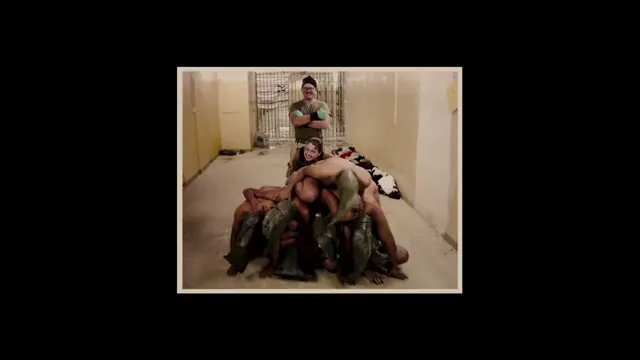
🎥 Similar Movies
If you enjoyed Standard Operating Procedure, you might like these similar films:
- Taxi to the Dark Side (2007): Another powerful documentary from the same era examining US interrogation practices and the death of an Afghan taxi driver, providing a broader context to the ‘dark side’ of the war on terror.
- The Fog of War (2003): Directed by Errol Morris, this documentary features interviews with former US Secretary of Defense Robert McNamara reflecting on his experiences in Vietnam and other conflicts, exploring similar themes of war, decision-making, and consequences.
- The Thin Blue Line (1988): An earlier, groundbreaking documentary by Errol Morris that uses his signature interview style and re-enactments to investigate a wrongful conviction, appealing to fans of his unique approach to uncovering complex truths.
- Citizenfour (2014): A modern documentary that similarly relies heavily on interviews to expose controversial government actions and surveillance programs, reflecting on themes of state power, secrecy, and individual conscience.
- Ghosts of Abu Ghraib (2007): An HBO documentary offering another perspective on the Abu Ghraib scandal, featuring interviews with both soldiers and former detainees, providing a direct comparison to Morris’s focus.
🛒 Standard Operating Procedure Related Products
- The Ghosts of Abu Ghraib (Book): Explores the Abu Ghraib scandal in greater detail, often providing broader context than the film. Written by different authors, offering diverse perspectives.
- The Fog of War: Eleven Lessons from the Life of Robert S. McNamara (DVD/Blu-ray): Another acclaimed documentary by Errol Morris, exploring themes of power, decision-making, and the consequences of war through interviews with Robert McNamara.
- War Photography: From Matthew Brady to Robert Capa to Iraq: A collection or analysis of war photography throughout history, discussing the role and impact of images in conflict.
- Standard Operating Procedure (Digital Rent/Buy): Own or rent the documentary film itself for repeat viewing or to share with others interested in the subject matter.
🎧 Soundtrack
Standard Operating Procedure features a captivating soundtrack that enhances the movie’s atmosphere and emotional impact. Here are some notable tracks:
You can find the complete soundtrack on Amazon Music and Apple Music.
🤨 FAQ
Standard Operating Procedure is a documentary by Errol Morris examining the 2004 Abu Ghraib prison scandal in Iraq, focusing on the infamous photographs, the soldiers who took them, and the broader context of the abuses.
The documentary features interviews with several of the soldiers involved in the Abu Ghraib scandal, including Lynndie England, Sabrina Harman, Javal Davis, Megan Ambuhl Graner, and Jeremy Sivits, among others.
According to the soldiers interviewed in the film, the reasons for taking the photos varied, from documenting events, following orders, capturing perceived ‘standard operating procedures,’ or personal reasons. The film explores the different motivations presented by the individuals involved.
The documentary highlights that primarily low-ranking enlisted personnel were convicted and served time for the abuses depicted in the photos. It raises questions about the lack of accountability for higher-ranking officers who oversaw the prison or set policies related to interrogation methods.
🔥 Bonus Content
Standard Operating Procedure deleted scene
Curious about what didn’t make it into the final film? This deleted scene with director Errol Morris and a central figure from Abu Ghraib offers a fascinating glimpse behind the curtain and adds even more layers to the story.
✨ Rate
There are no reviews yet. Be the first one to write one.


